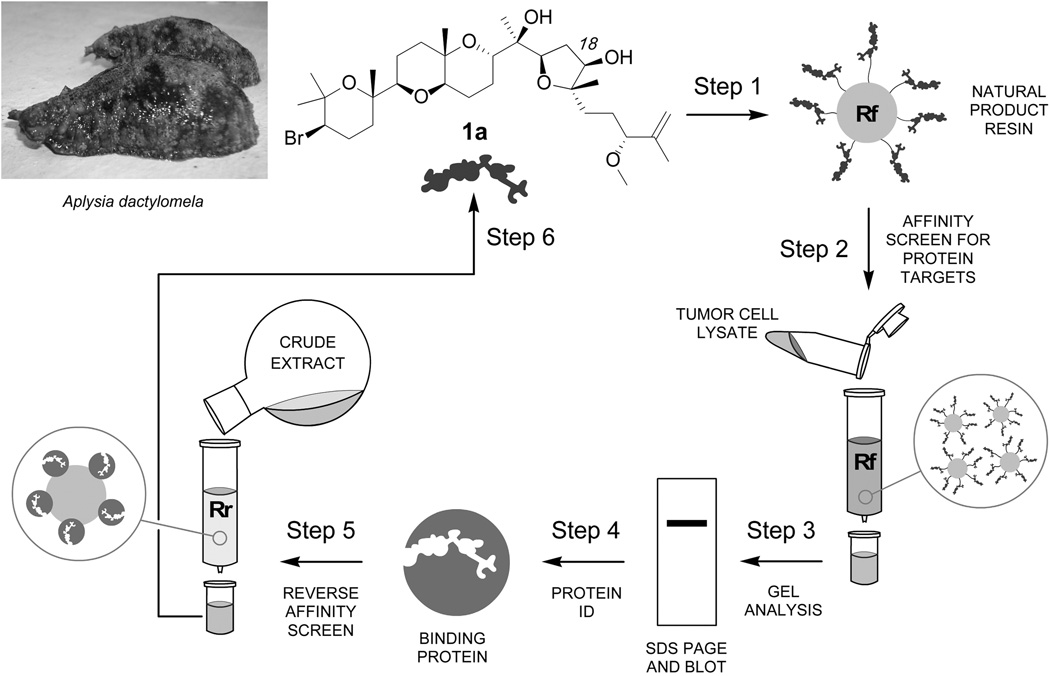Figure 1.
Protocol for bidirectional affinity–guided studies. (Step 1) Aplysqualenol A (1a) was covalently linked to a resin (Rf). (Step 2) Resin Rf was then used to screen for aplysqualenol A (1a) binding proteins. (Steps 3–4) The bound proteins were examined by SDS PAGE, identified by proteomic analyses, and validated by western blot analysis. (Steps 5–6) The isolated binding proteins were then attached to resin and used in a reverse–affinity sense using resin (Rr) to isolate 1a from its corresponding crude natural product extract.

